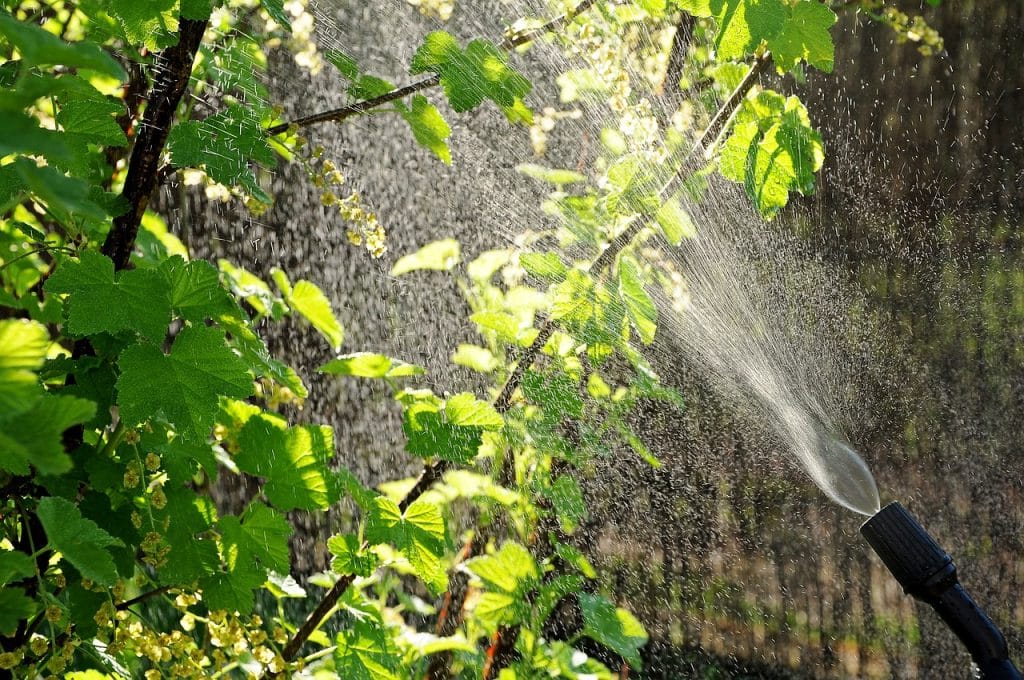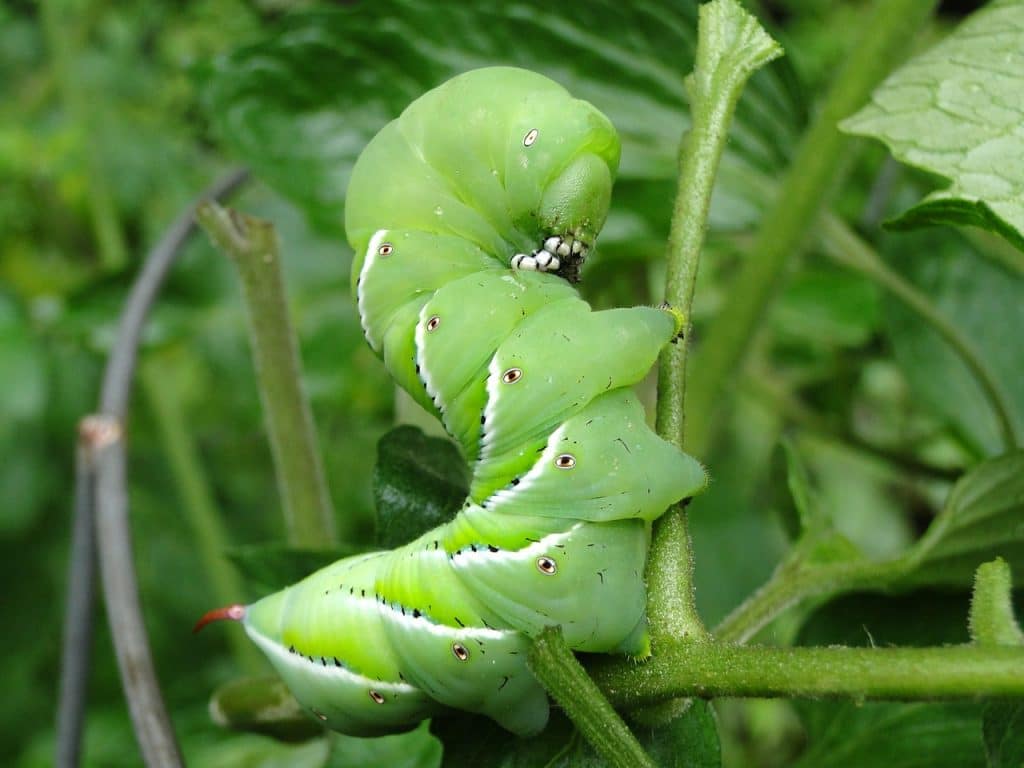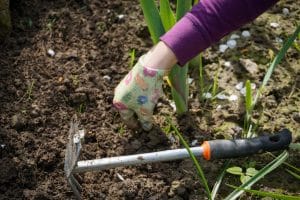Because there are so many different garden pests that could endanger your garden, we can’t address all of them. However, there are some very common insects that many people have problems with. We will go over the most common types of insects that you need to be aware of.
Aphids
The most common pest in a garden are aphids. They are tiny, pear-shaped insects that have two tubes projecting backward from their abdomen. They also have long antennae and some have transparent wings. They could be black, green, yellowish or even a powdery gray. The baby aphids or nymphs look just like adults except they are smaller and have no wings.

Because they feed in colonies, where you see one, there are more. The leaves of the plants they feed on will curl and start to deform. Once you see this, it’s usually too late so keep your eye out for them before they cause damage.
You need to check under the leaves of the plants first. If you see ants, there are aphids there as well. The ants eat the aphids so they will protect the aphids from any predators.
To control aphids, drench the plants using a strong spray from your garden hose. Insecticidal soap, summer oil, dormant oil and homemade garlic sprays work well.
Cabbage Loopers
Cabbage loopers attack cabbage, cauliflower and broccoli. They are light green and have white stripes on their backs. The larvae are about 1.5 inches and have three thin legs up by the head and three larger legs at the rear. When the insect moves, the middle section is looped and legless.
It’s the larva that damages the plants. They feed on the underside of leaves between the veins. As they grow, they create ragged holes and continue moving towards the center and feed at the base of the head of cabbage. Large loopers are able to burrow through six layers of the head leaves even if they are tightly wrapped.
The easiest way to control cabbage loopers is by handpicking the larvae from the plant every couple days.
Earwigs
Earwigs can be useful to your garden but can easily get out of control. They are slender, long and brown. They have pincers at the rear and can run fast. They will release a foul odor if they are disturbed. They will eat the leaves of the plants can create holes. Trapping them is the best way to get them out of your garden.
You can use a shallow dish and add any kind of beer to attract them. They will climb into the dish, drink the beer and then die. You could also use corn oil, vinegar and water or fish oil. Simply sift out the dead bugs and keep using the liquid.
If you see yellow spots or a silvery, metallic-like sheen on your leaves, that could mean thrips. They are very tiny and very hard to see. They are only about 1/16 of an inch. They come is all colors. Use the sprays we’ve discussed. You can also spray your plants with soap and water. Ladybugs eat the thrips, so be sure you attract ladybugs.
Hornworms
Hornworms are up to 4 inches long and feed on tomatoes. You can recognize them by the horn on the rear. They are green and can be difficult to spot. They feed on the inside of the plant during the day and move to the outside of the tomato at dusk and dawn.

You will start to notice damage from the hornworm about midsummer and you will see it throughout the rest of the season. Because they are so large, they will quickly destroy the leaves of tomatoes, eggplants, peppers and potatoes. You will likely see the damage at the top of your plants before you see the insect.
The best way to get rid of hornworms is to pluck them from your plants. You could also use BT spray.
Slugs
Slugs may be the worst type of pest to deal with in your garden. They feed on just about anything, but they like succulent foliage the best such as seedlings, herbs and fruit that is ripening. They will even feed on citrus and other types of fruits.
Slugs hide under rocks and leaves in the day and come out at night. They leave a silvery trail behind which is dried mucous. You can control these insects using a dish of beer. Other people have sprinkled salt on them which dissolves them but that may be a cruel way to kill them.
You can prevent slugs from your garden by getting rid of any leaves that are dead or decaying. Coffee grounds and eggs shells keep them away too. These are the most common types of destructive insects that you need to keep an eye out for.
Use the methods we have suggested to get rid of these common garden pests without using toxic pesticides. Taking care of pests is a part of gardening but finding non-toxic solutions always is best.



